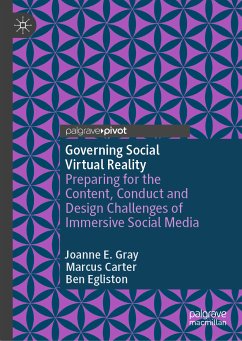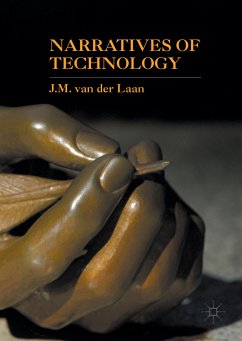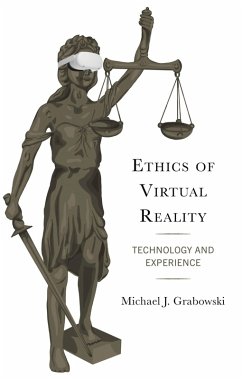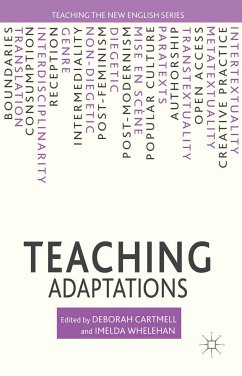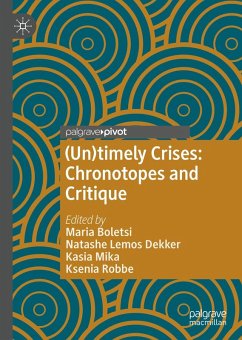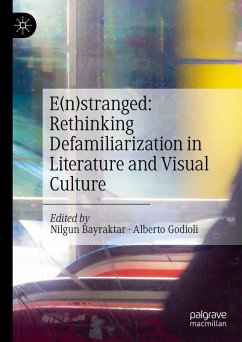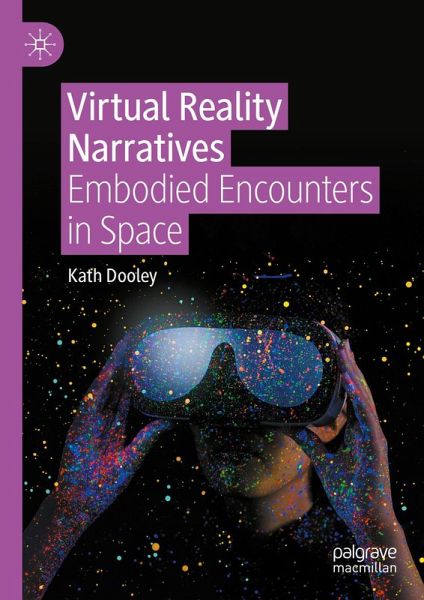
Virtual Reality Narratives (eBook, PDF)
Embodied Encounters in Space
Versandkostenfrei!
Sofort per Download lieferbar
88,95 €
inkl. MwSt.
Weitere Ausgaben:

PAYBACK Punkte
44 °P sammeln!
This monograph delves into recent evolutions in virtual reality (VR) storytelling, focusing on entertainment-based works created or launched since 2020. Through various case studies, it showcases the increasing diversity and sophistication of recent narrative-based projects. Moving past the initial hype associated with the latest wave of VR, a number of innovative and affective works combining documentary-based or fictional storytelling with game mechanics, live theatre and other elements, have appeared at festivals or on distribution platforms in recent years. These interdisciplinary works ha...
This monograph delves into recent evolutions in virtual reality (VR) storytelling, focusing on entertainment-based works created or launched since 2020. Through various case studies, it showcases the increasing diversity and sophistication of recent narrative-based projects. Moving past the initial hype associated with the latest wave of VR, a number of innovative and affective works combining documentary-based or fictional storytelling with game mechanics, live theatre and other elements, have appeared at festivals or on distribution platforms in recent years. These interdisciplinary works have much to tell us about the future of VR storytelling but have yet to receive sustained analysis. This book aims to correct that.
Dooley argues that VR, as an interactive medium that places the user inside a storyworld in a visible or invisible virtual body, offers narratives that incorporate the user's body as a storytelling tool. This fosters user-centred stories that unfold in three-dimensional space. Adopting phenomenological and formal analysis methodologies, the monograph examines case studies through their approaches to narrative, style, and interactive devices. Key concepts that are explored include agency, direct address, environmental and spatial storytelling, embodiment and presence. By providing a much-needed analysis of works through a variety of theoretical lenses, the book illustrates how recent VR storytelling fosters powerfully transformative experiences.
Dooley argues that VR, as an interactive medium that places the user inside a storyworld in a visible or invisible virtual body, offers narratives that incorporate the user's body as a storytelling tool. This fosters user-centred stories that unfold in three-dimensional space. Adopting phenomenological and formal analysis methodologies, the monograph examines case studies through their approaches to narrative, style, and interactive devices. Key concepts that are explored include agency, direct address, environmental and spatial storytelling, embodiment and presence. By providing a much-needed analysis of works through a variety of theoretical lenses, the book illustrates how recent VR storytelling fosters powerfully transformative experiences.
Dieser Download kann aus rechtlichen Gründen nur mit Rechnungsadresse in A, B, BG, CY, CZ, D, DK, EW, E, FIN, F, GR, HR, H, IRL, I, LT, L, LR, M, NL, PL, P, R, S, SLO, SK ausgeliefert werden.



